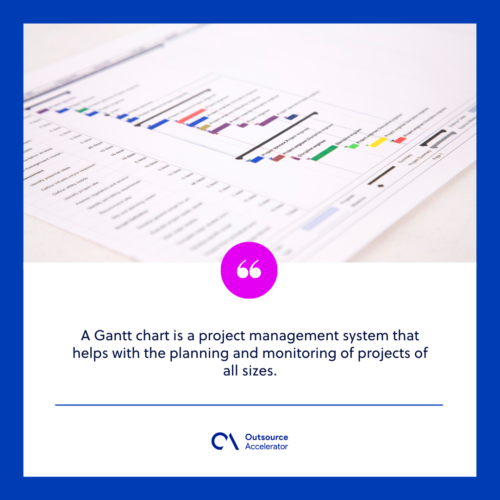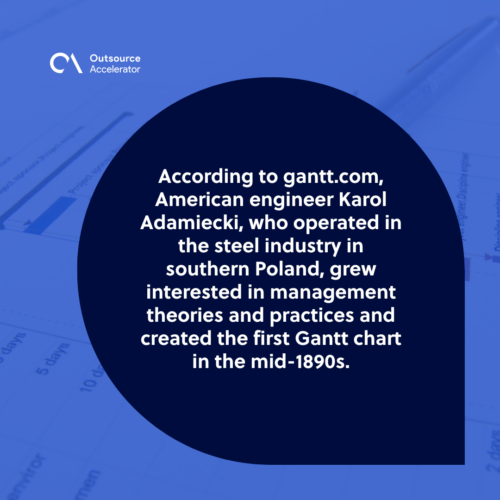Gantt chart
Definition
What is a Gantt chart?
A Gantt chart is a project management system that helps with the planning and monitoring of projects of all sizes. They are especially effective for simplifying complicated tasks.
When there is a large team with several stakeholders and the scope varies, a Gantt chart is one of the most helpful methods to represent tasks or events toward times.
Project management timelines and tasks are turned into a horizontal bar chart, displaying start and end dates, connections, planning, and timeframes, as well as how almost all of the task is done at each stage and who owns the task.

Gantt chart history
According to gantt.com, American engineer Karol Adamiecki, who operated in the steel industry in southern Poland, grew interested in management theories and practices and created the first Gantt chart in the mid-1890s.
Henry Gantt, an American engineer, and project management consultant, created his version of the chart about 15 years after Adamiecki, which became widely recognized and famous in Western countries.
Gantt charts were created meticulously by hand. Each time a project changed, it was required to update or redraw the chart, which restricted its utility, as the change was a part of most operations.
Gantt charts may now be readily generated, updated, and printed mainly because of the technology and project management software.
Today, Gantt charts are mostly used to track project timetables. It is helpful to be able to provide extra information about the project’s different tasks or stages, such as how the activities connect, how far each task has come, and what resources are managed for each work.

Benefits of a Gantt chart
The chart distinguishes between activities that may be completed simultaneously and those that cannot be launched or completed until other activities are performed.
The Gantt chart may assist in identifying possible delays and operations that may have been left out of the project timetable.
It also illustrates task downtime or added hours for task completion that should not delay the project, nonessential tasks that can be postponed, and key tasks that must be finished ahead of time.
Gantt charts are useful for project management of all varieties. These charts are used in a wide range of industries and for a variety of activities. These may involve the development of infrastructures such as dams, bridges, and roads.
Software development and other innovations may also be included. Gantt charts may be designed using project management tools such as Microsoft Visio, Project, SharePoint, and Excel.
Why use Gantt charts?
When creating a Gantt chart, users must consider all of the tasks included in the project. You’ll decide who will be in charge of each task, how long each task will take, and what difficulties your team might encounter as part of this plan.
This in-depth thought allows you to guarantee that the timetable is manageable, that the appropriate personnel are allocated to each activity, and that you have solutions in place for any difficulties before you begin.
They also help you in identifying the practical components of a project, such as the minimum time required to execute and which tasks must be completed before others begin.
Furthermore, you may use them to define the sequence of activities that must be done on time if the entire project is to be completed on time.
Finally, you may utilize them to keep your team and sponsors updated on your progress. Simply update the chart to reflect schedule changes and their consequences, or use it to convey the completion of critical activities.







 Independent
Independent




